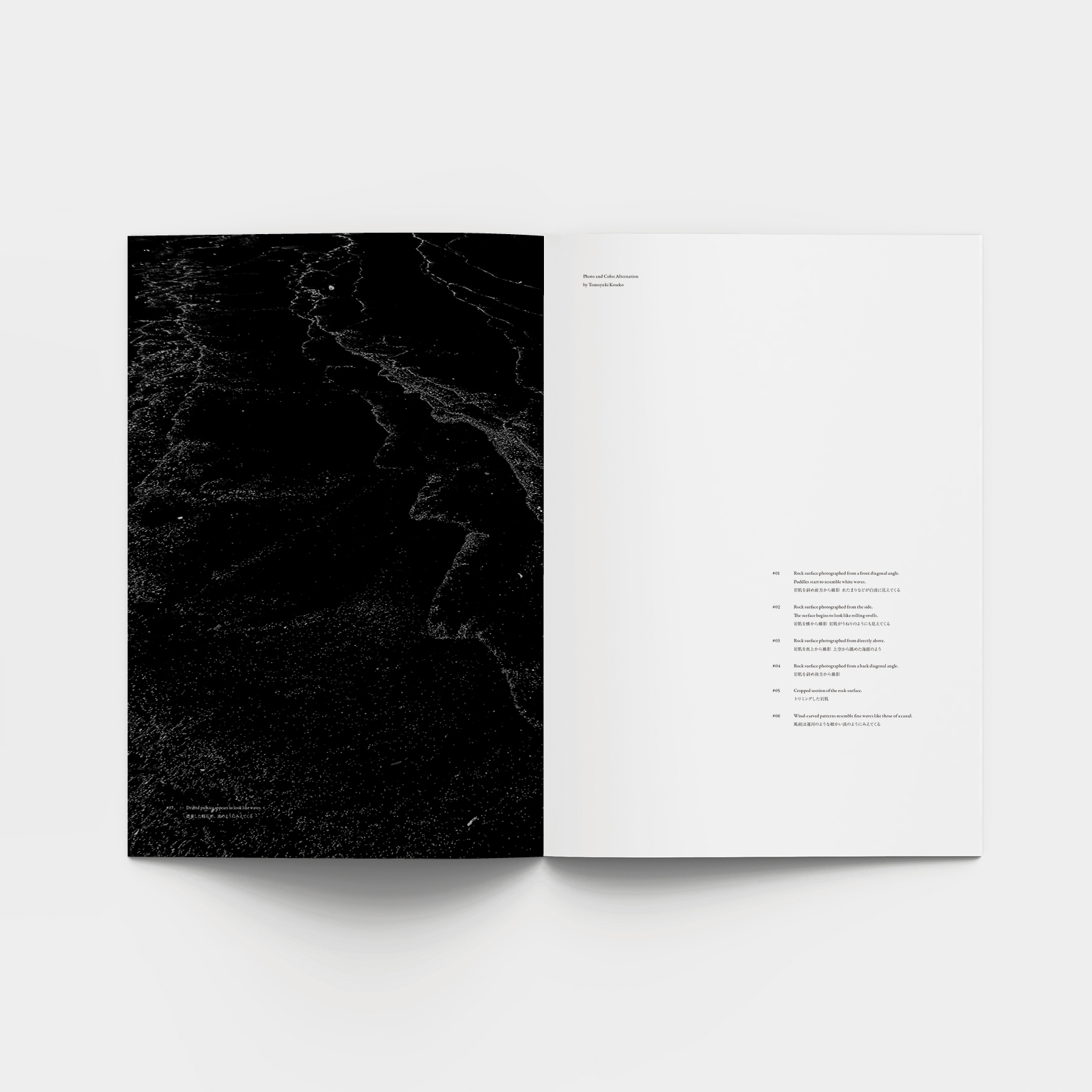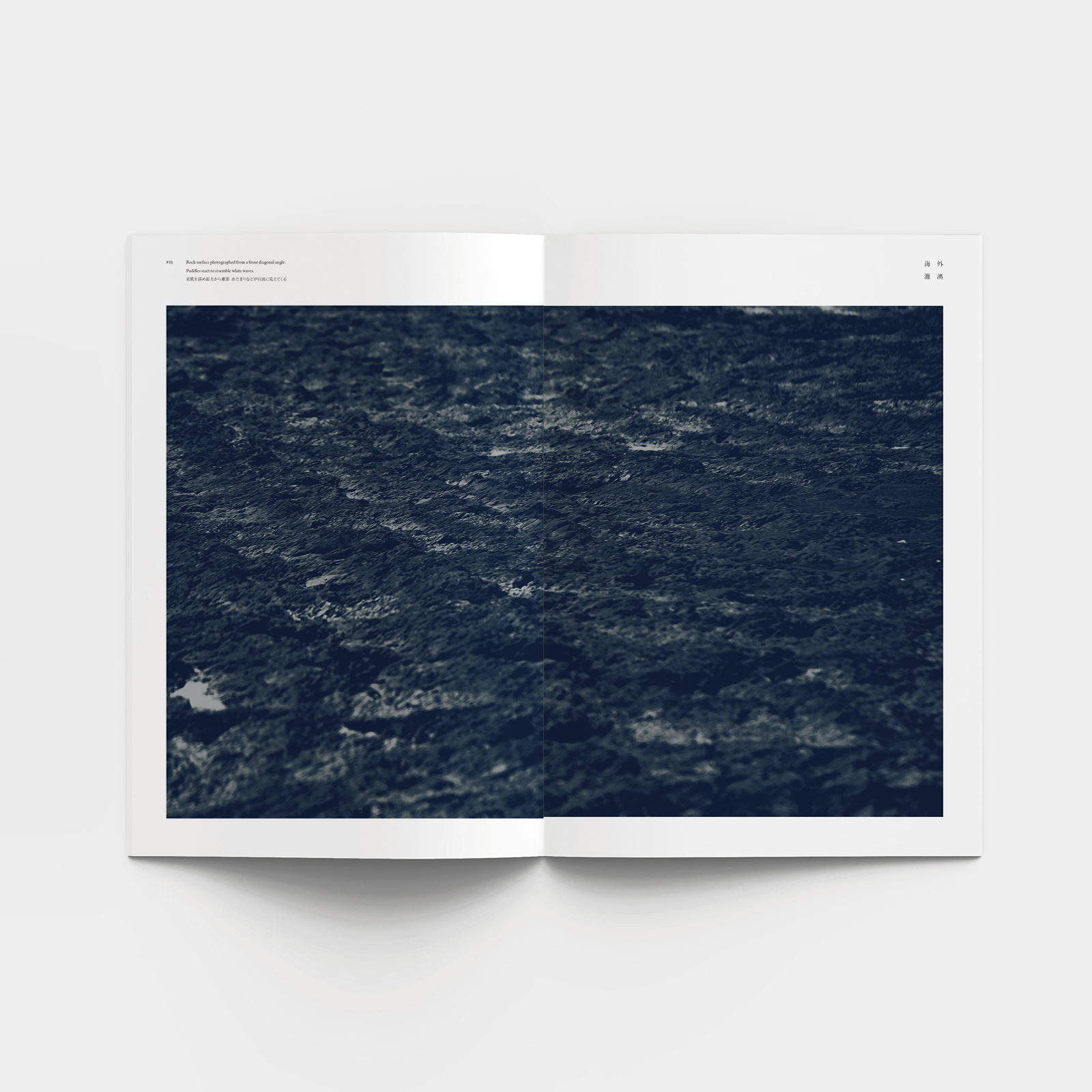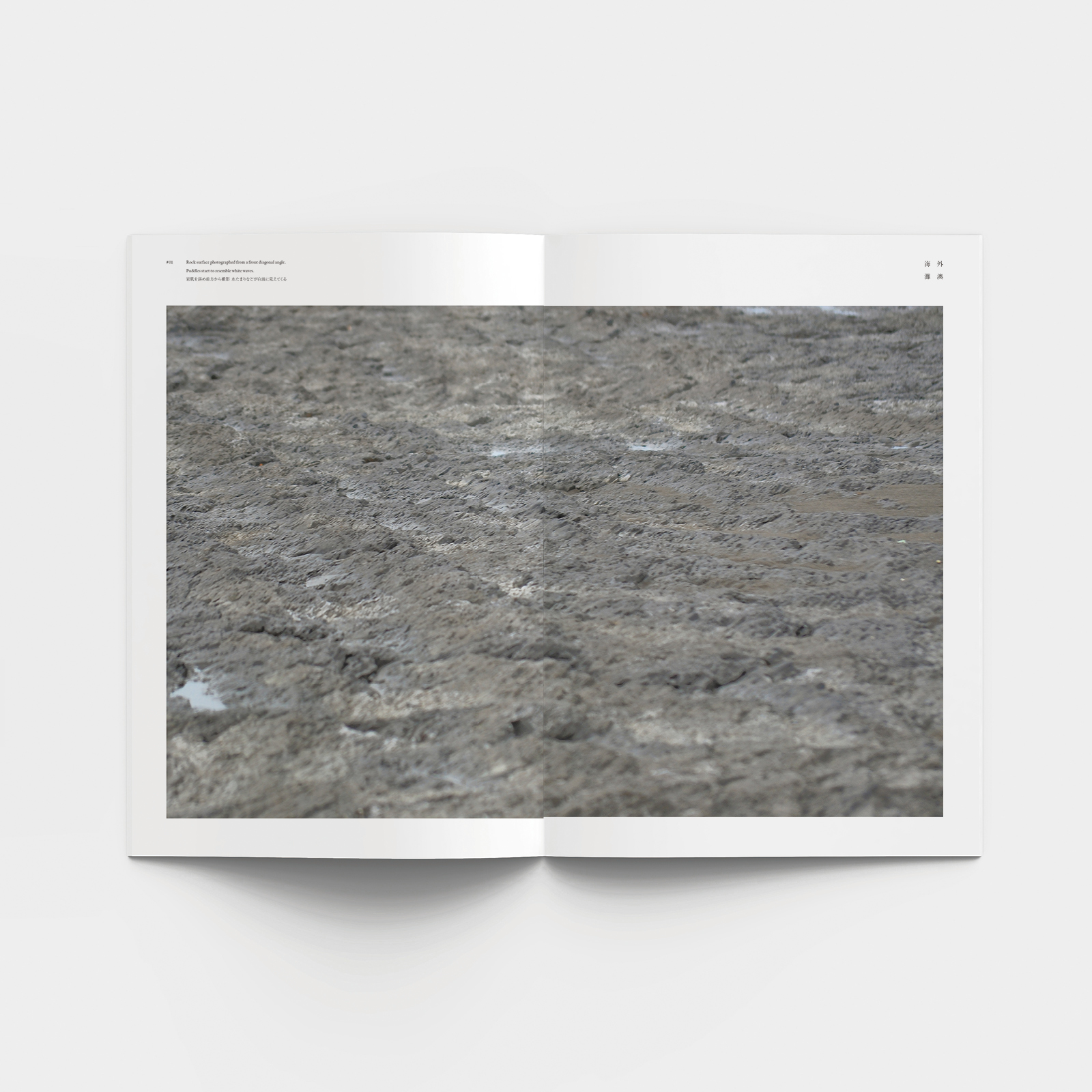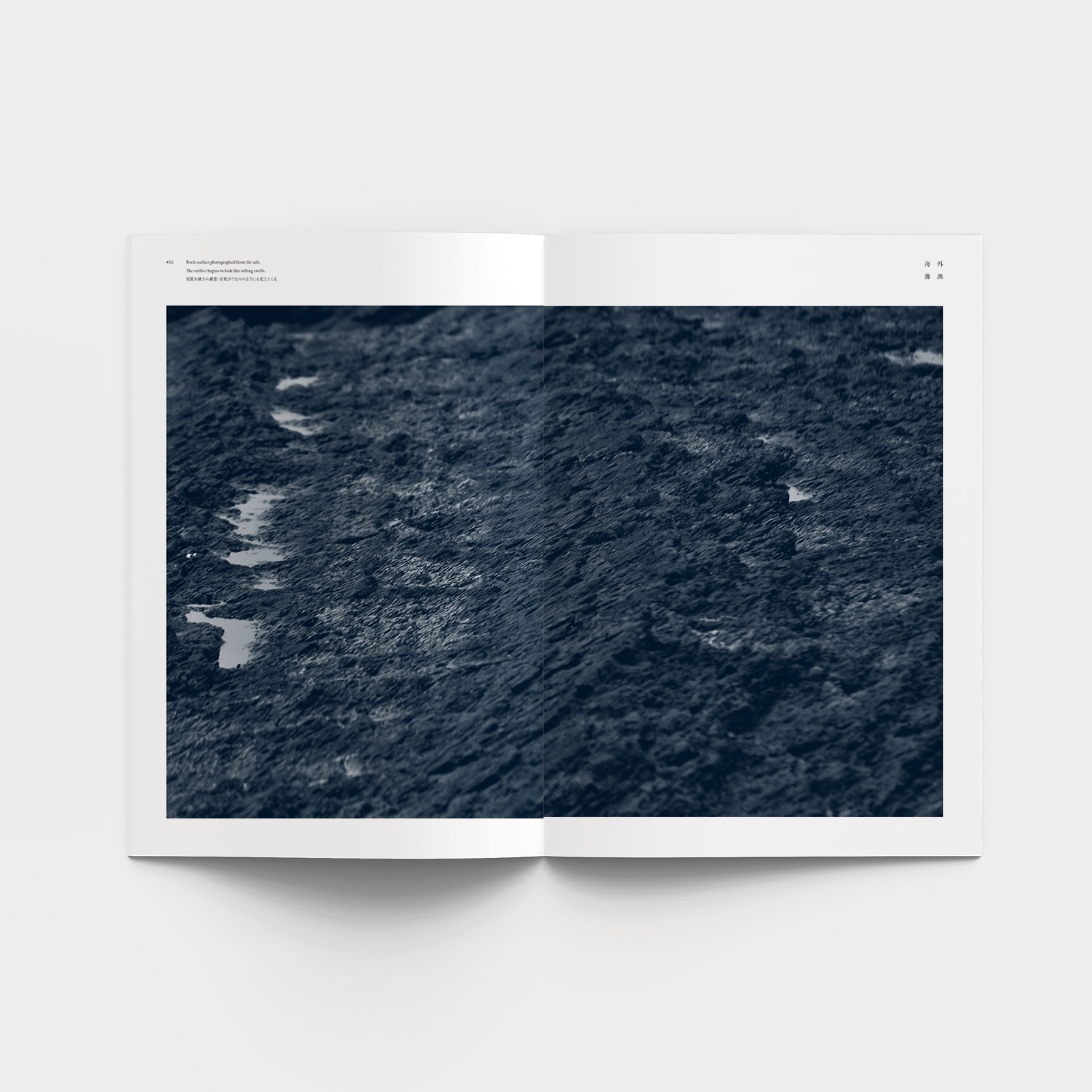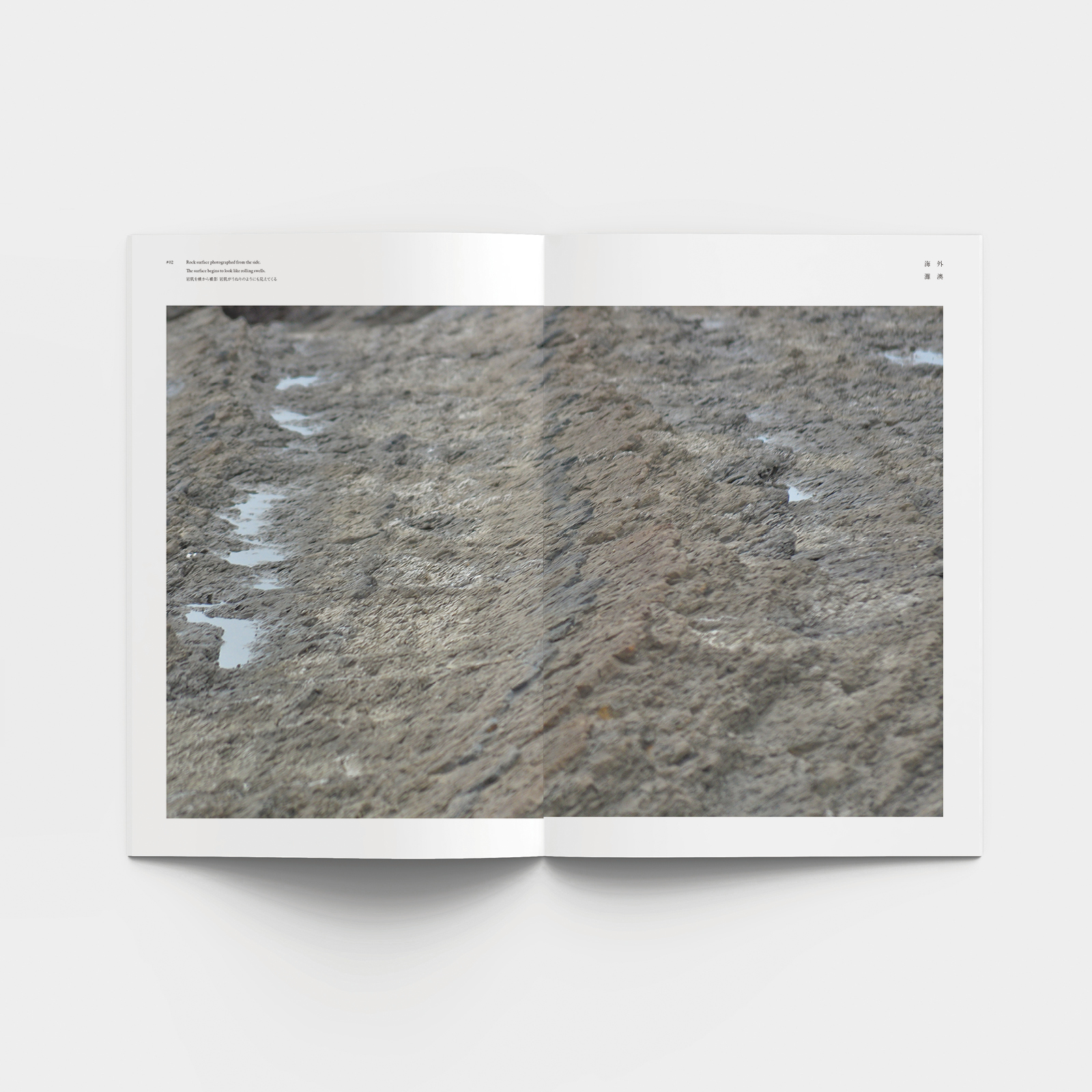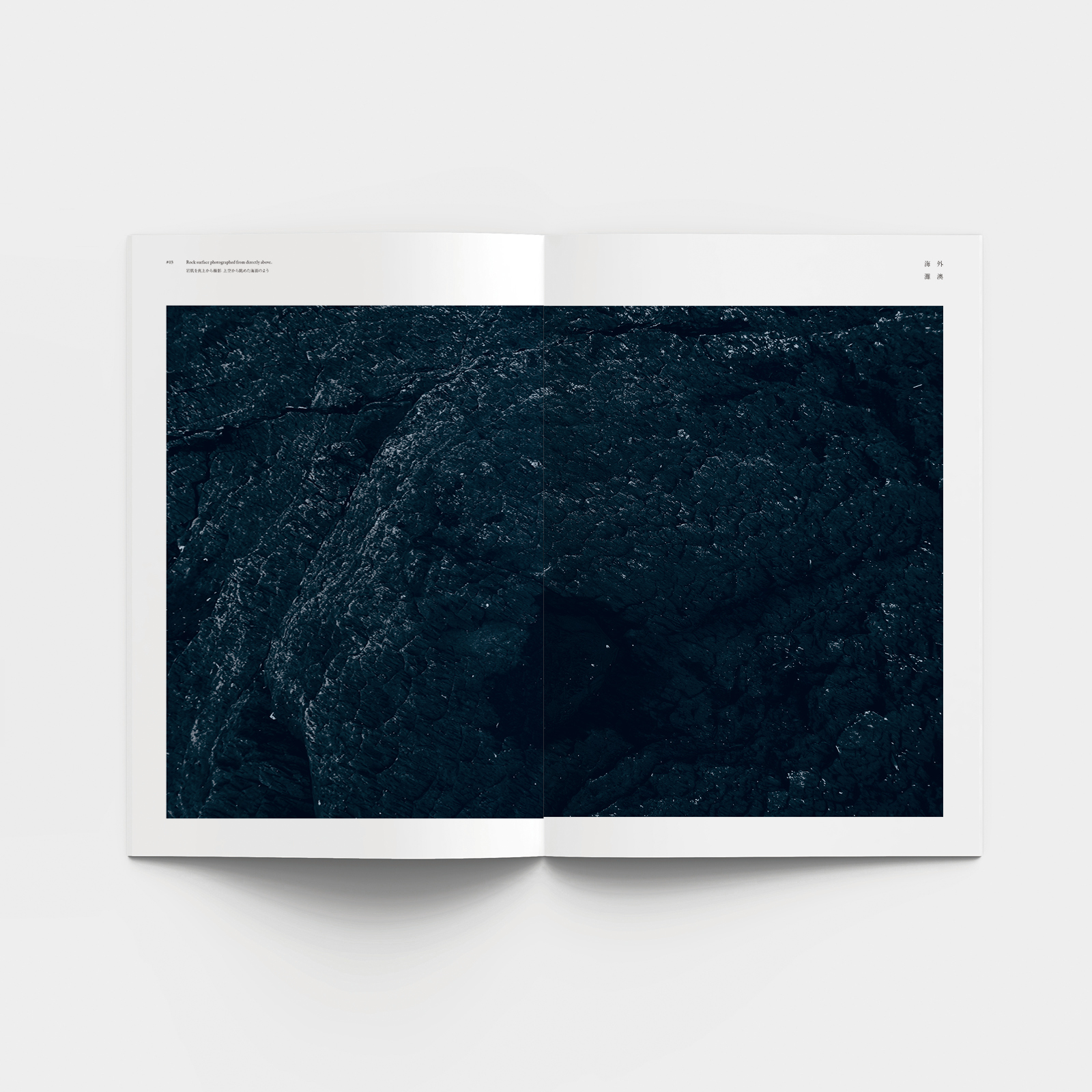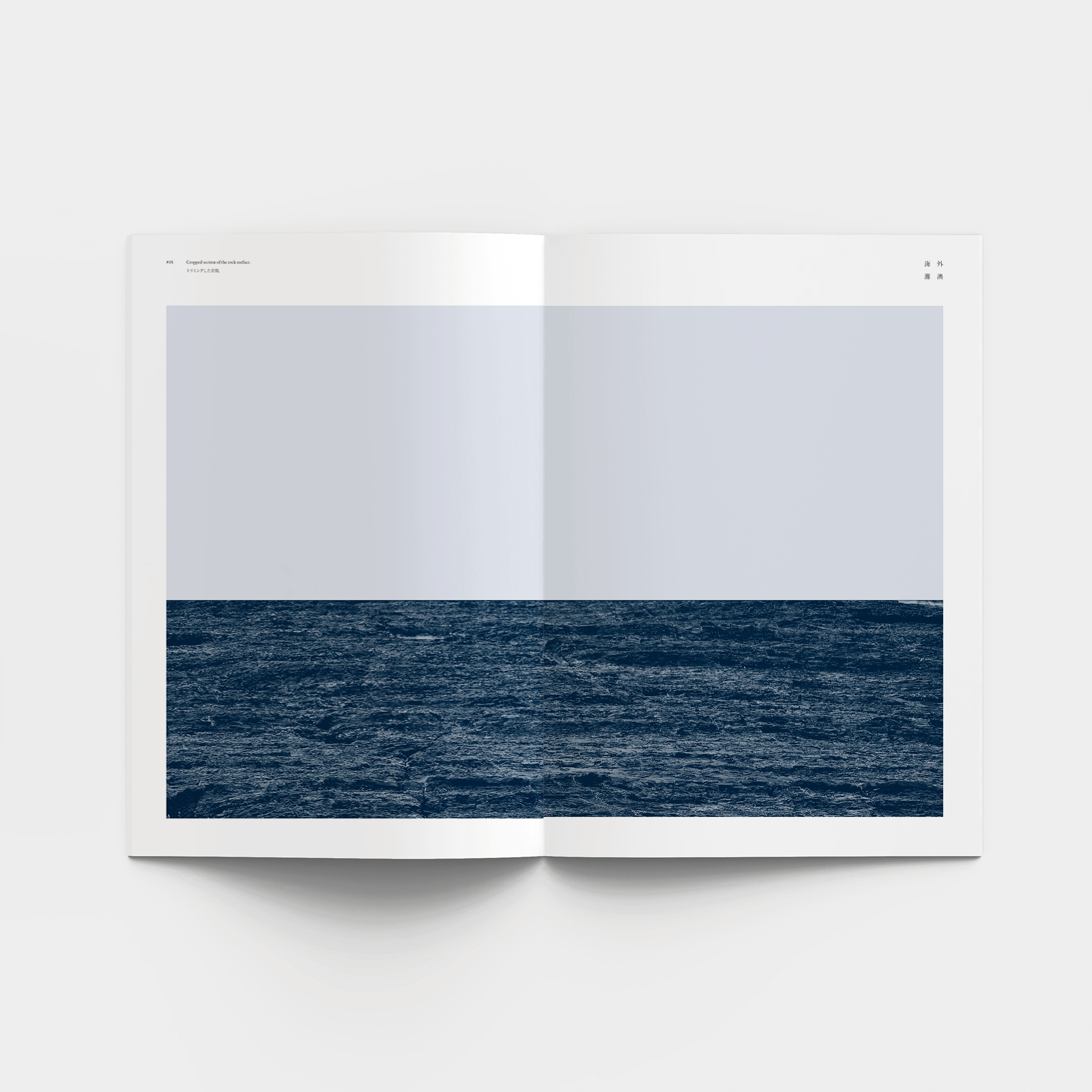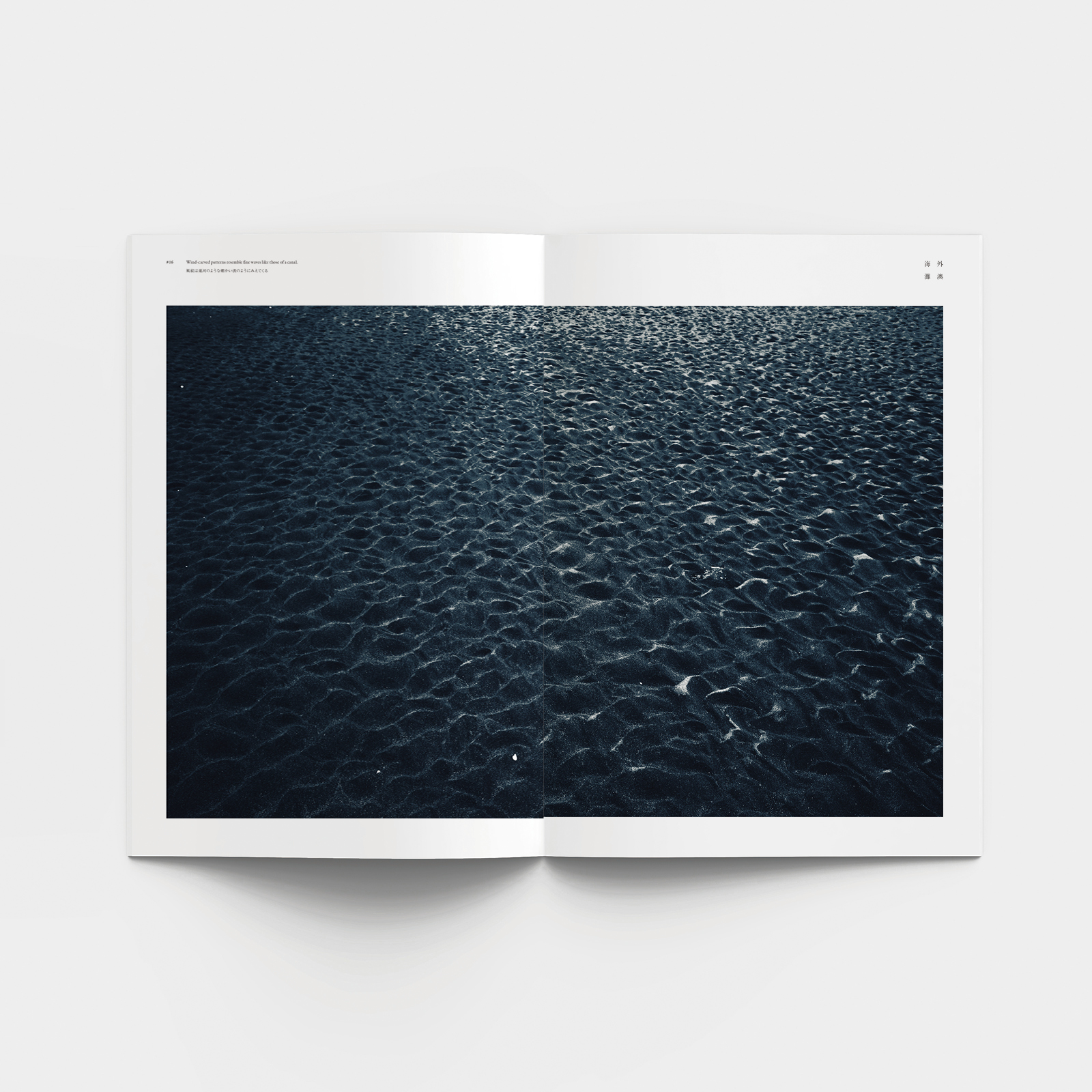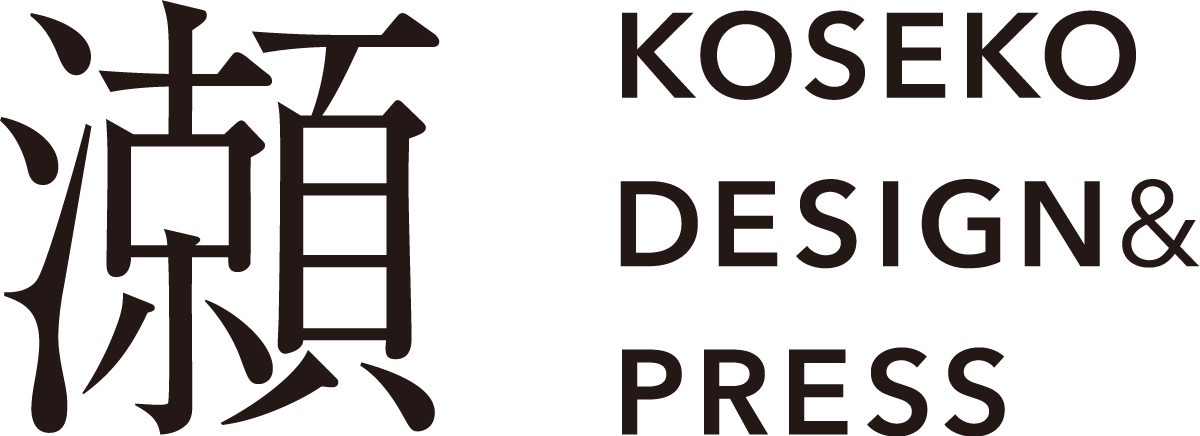Dec. 2024
Pages: 24+4
Size: A4 (210x297mm)
Binding: Stapler Bound
Print: Laser Print
Paper: Ventnouveau/Perla
Graphic inc.
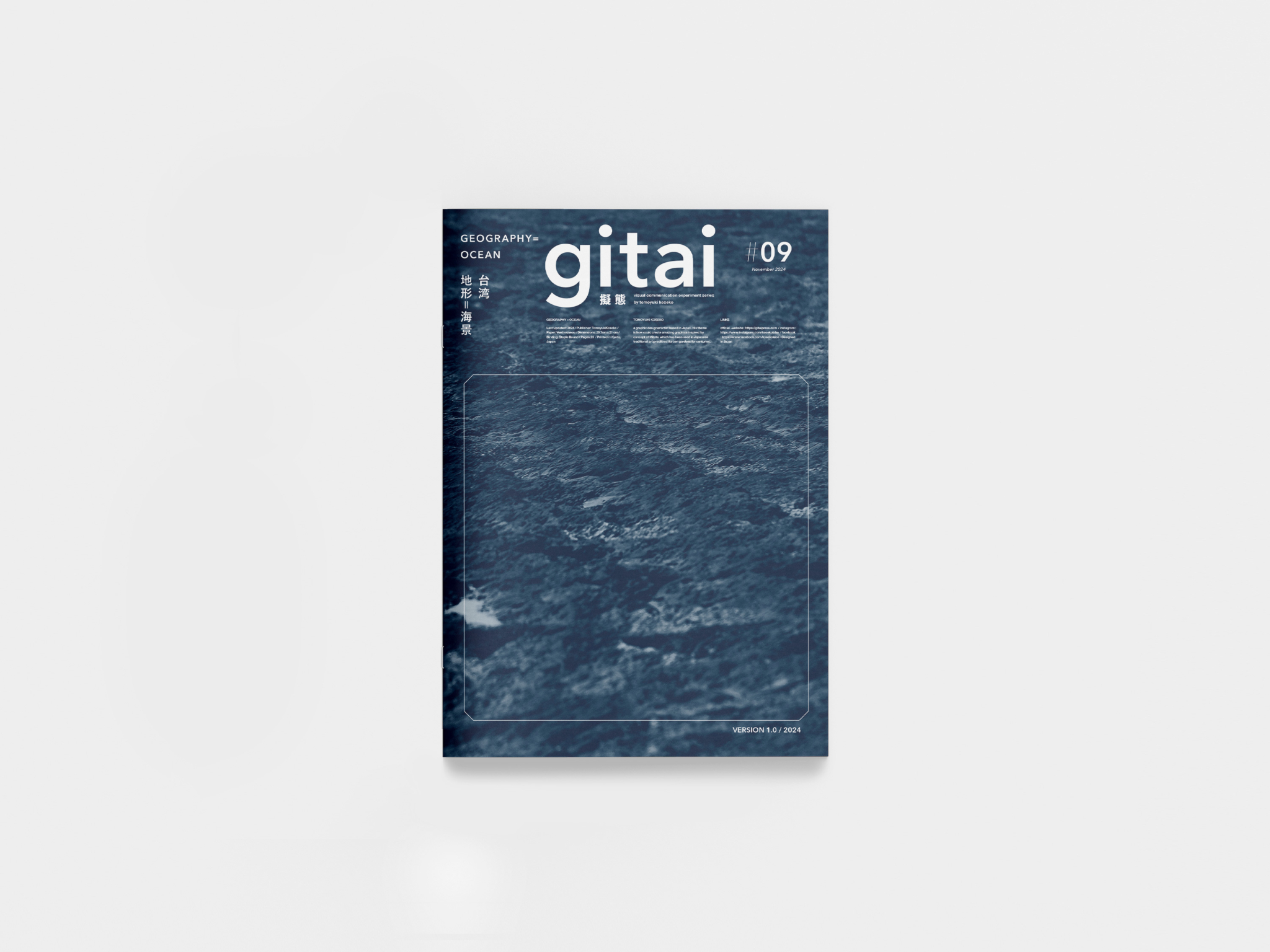
We photographed the scenery of Wai’ao Beach (Wai’ao Coast) in northeastern Taiwan. However, almost none of the seascape images captured here are actually “the sea” itself. The photos that look like a blue ocean are, in fact, images of the local sedimentary rock surface that have been color-adjusted to blue, mimicking the appearance of a wave-rippled ocean.
Even though these are photos of rock surfaces, they evoke a sense that one could float a boat on it or dip a hand into the water. It almost appears to afford the experience of a water surface (though actual affordance may not occur since these are just images). Please enjoy the historical connection to the sea carried by these images of sedimentary rock.
At first glance, this work may seem different from the previous gitai series since it doesn’t resemble a planet. However, both the sea and the rocks are key elements that make up the planet Earth. Despite the different scales, they share a common theme. Please keep the connection to previous works in mind as you view it.
台湾北東部にある外澳海灘(外澳海岸)の風景のフォトアートブック。しかし、本誌に収録された被写体はほぼすべて「海そのもの」ではありません。青い海原のように見えている写真は、現地の堆積岩の岩肌を青く色変換したもので、波立つ海面に見立てています。
岩肌の写真であるにもかかわらず、船を浮かべたり、海水に手を浸したりできそうな感覚を覚えます。海面のアフォーダンスが生まれているようにも思えます(画像なので実際のアフォーダンスは発生しないと思われますが)。写真によって画像化した堆積岩が持つ海の歴史をお楽しみください。
一見すると惑星ではないこの作品は、これまでのgitaiシリーズと異なるようにも見えますが、海も岩も地球という惑星を構成する重要な要素です。スケールは異なれど、共通のテーマを持っています。これまでの作品との繋がりを意識しながら、眺めてみてください。
